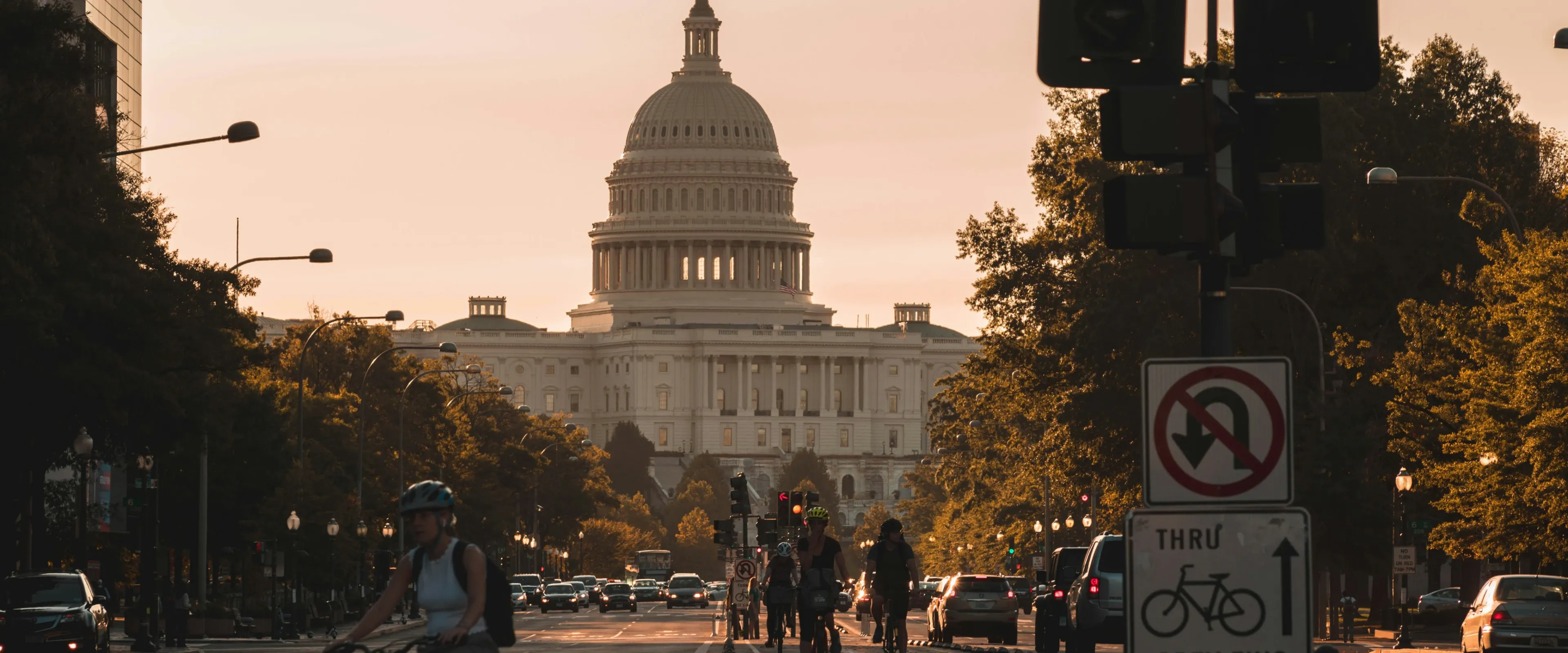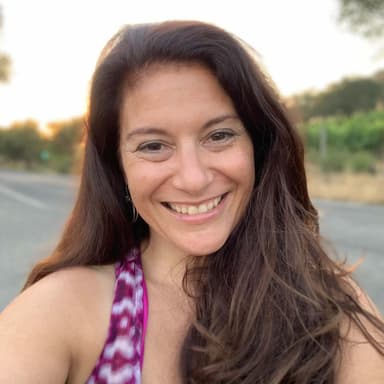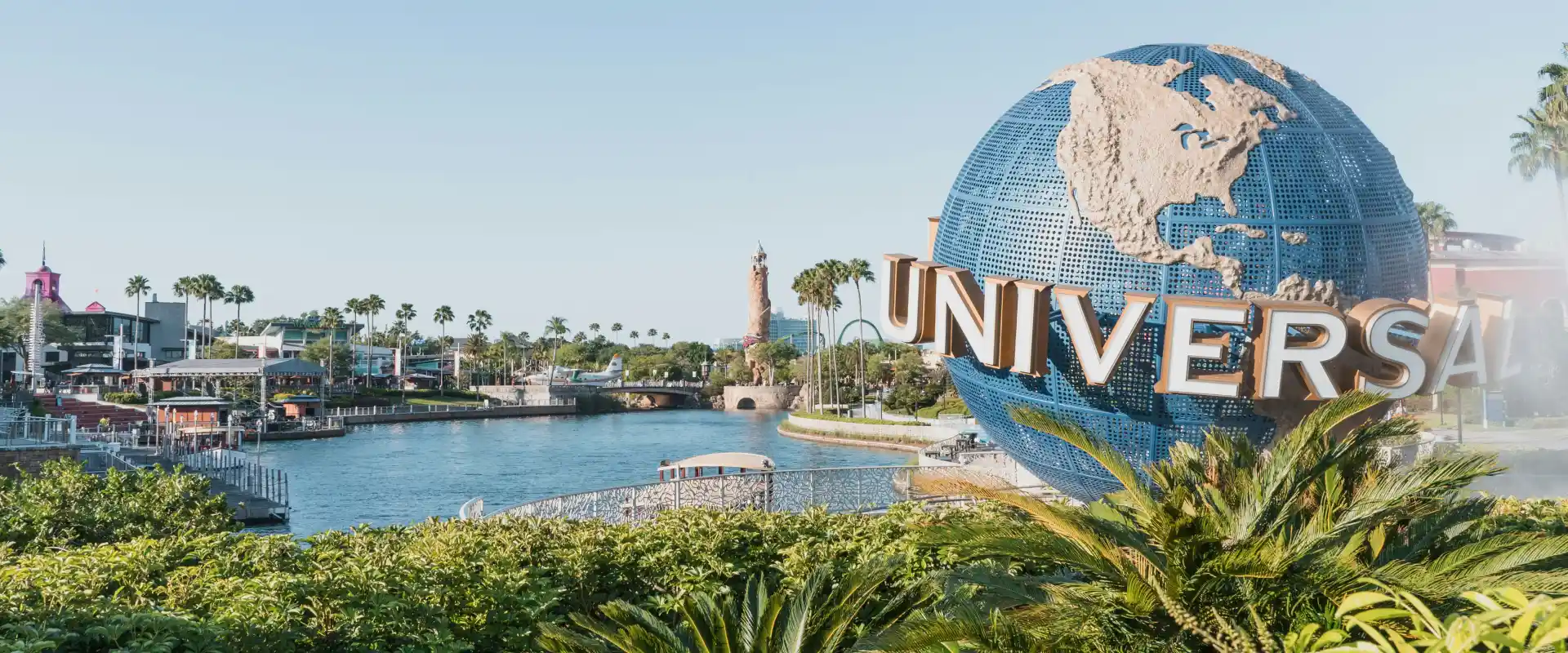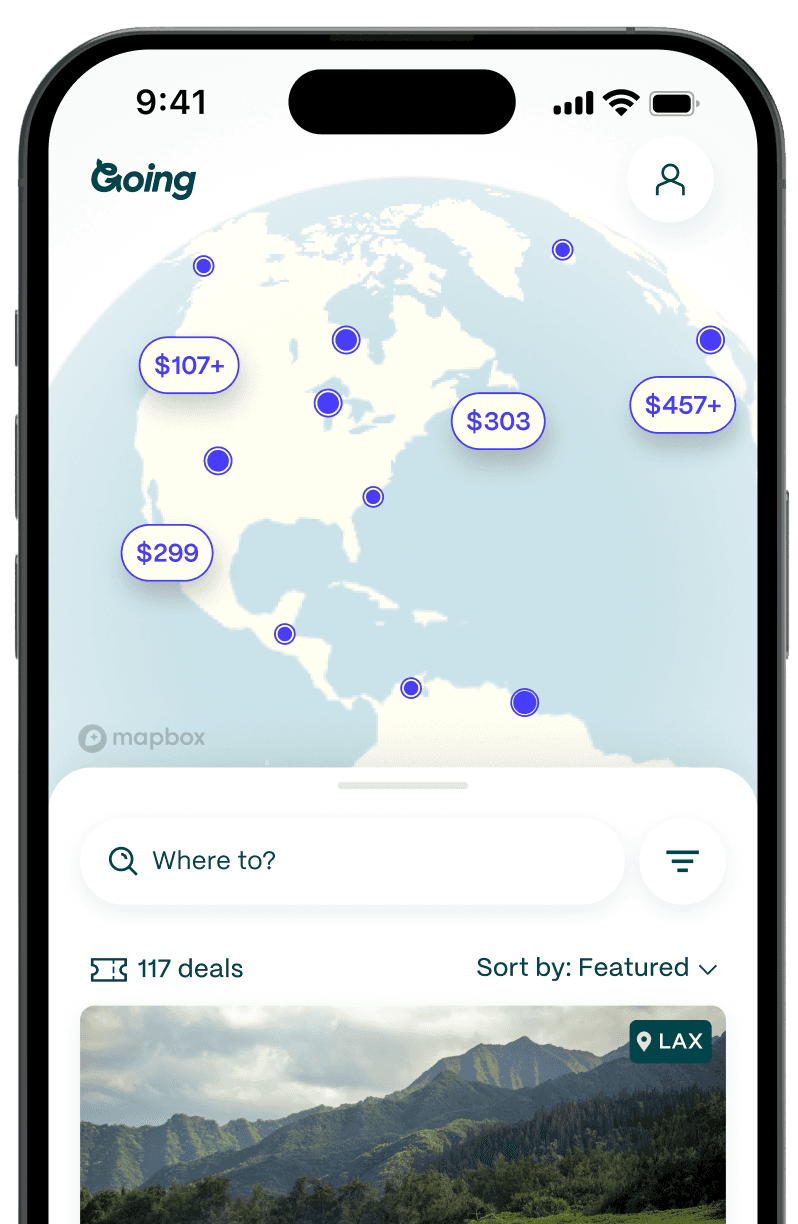
Washington, DC: The Capital City With the World’s Most Famous House
If politics is an industry, then DC’s surely a company town—but while it’s the seat of democracy in the US, this lively, gorgeous city is notable for much more than the White House and Congress.
Scroll through We the People DC, taken over each day by a different one of Washington’s 670,000-plus residents, and you’ll find the city is also home to artists, scientists, writers, kick-ass local music and theater scenes, and nature that’ll knock your socks off.
People flock here from every country on Earth, drawn by diplomacy, a strong job market, and DC’s status as a sanctuary city, filling the nation’s capital with food and cultures from around the globe.
Putting the “retro” in retrocession

Way back in 1790, DC was declared the seat of America’s government. Washington itself was mostly named for the first US president, but Columbia, in reference to explorer Christopher Columbus, was then considered a patriotic shorthand for America. It made sense, then, to dub the new city’s territory the "District of Columbia.”
Originally a 100-square-mile square of land ceded by Maryland and Virginia, the city was marked out with 100 chunks of sandstone. Of these “boundary stones,” 36 can still be found around the city, sometimes surrounded by little iron fences.
In 1846, Virginia took back its port city of Alexandria, which made up a big piece of that original DC diamond. As a result, DC is now shaped like a ragged kite, divided into four uneven quadrants—SE, SW, NE, and NW—with the US Capitol Building at just about its center.
On the waterfront

With about 42 inches of annual rainfall, DC can certainly be a damp city but, contrary to popular belief, it isn’t a swamp. Inadequate sewer systems and farming erosion settled muck and mire on the city’s south and west borders into the mid-1800s, but the Army Corps of Engineers reshaped this into the National Mall. The District is actually a coastal floodplain with two major rivers, both studded with glorious spots to explore.
The Anacostia Riverwalk Trail meanders for 20 paved and boardwalked miles through the SW and SE quadrants. In the Navy Yard neighborhood, it stretches beside The Yards DC, where all the bars and restaurants offer takeout to enjoy along the way. Also connected by the trail are Kingman + Heritage Islands (popular spots for paddling, hiking, and birdwatching) and the 700-acre Kenilworth Park & Aquatic Gardens, a wetland wonderland full of ponds, cattails, and water lilies.
Along the Potomac River, just across a walking bridge off George Washington Parkway, pedestrian-only Theodore Roosevelt Island is arguably DC’s most forested national memorial. Its 88.5 acres are full of winding walkways, riverside rocks, inquisitive deer, and in the center, a 17-foot-tall statue of the former President—glasses, mustache, and all.
The City of Trees

One of DC’s historic nicknames is the “City of Trees,” since it’s home to more than 300 species. Its official tree is the enormous scarlet oak, named for its bright red leaves in the fall.
In springtime, DC’s cherry blossoms bring all the folks to the yard (you can check their progress any time on the Bloom Cam). America owes this floral windfall to Eliza Ruhamah Scidmore, National Geographic’s first female journalist, who fell in love with cherry trees on an 1885 trip to Japan. Determined to have similar cherry trees planted at home in Washington, Scidmore raised a ton of money and turned to then-First Lady Helen Taft for help; in response, Japan happily sent more than 3,000 Prunus serrulata specimens (called sakura in Japanese) to the White House, and in 1912 they were planted around the Tidal Basin.
In 1965, Japan sent 3,800 more to amateur horticulturist Lady Bird Johnson, and most of those trees now ring the Washington Monument.
Eat your way around the world
All over the city you’ll find an amazing variety of international cuisines—one of the many perks of a global population—including Afghan, Ethiopian, Balkan, Georgian, Uyghur, Taiwanese, and Dominican.
NE’s Union Market is a one-stop shop, with picnic tables and Astroturf out front and everything from veggie dosas and bulgogi bowls to Southern comfort food. Downtown near the Mall, the Penn Quarter neighborhood is home to chef and humanitarian José Andres’ local restaurant empire, which includes Zaytinya (Mediterranean), Oyamel (Mexican), and China Chilcano (Chinese-Peruvian).
No food says DC, though, like the signature “half-smoke,” a half-beef, half-pork smoked sausage cradled in a bun and smothered in chili and cheese. Try one at Ben’s Chili Bowl. Fried chicken wings are another DC favorite, but don’t forget the traditional side of sweet & sour DC Mumbo Sauce, which can be shipped directly from Capital City Co. in containers as large as a gallon.
Not that kind of mall

The National Mall was named for elegant, tree-lined parks in England where pall-mall (a version of croquet) was played. Ironically, DC’s early Mall was a bit less posh; it served as home to grazing cows, a slaughterhouse, and for a hot-minute there, the Baltimore & Potomac Railroad.
The modern, manicured version that stretches from the Lincoln Memorial to the Capitol Building, is now full of monuments, memorials, and museums, including a number of Smithsonian Institution Museums, the United States Holocaust Memorial Museum, and the National Gallery of Art, all of which are free to enter, though you may need to reserve tickets ahead of time for some locations.
Taxation without representation
More than 230 years after its creation, the District of Columbia still doesn’t have a full voting member in Congress. Eleanor Holmes Norton, DC’s current representative, can vote in committee and procedural matters but can’t actually vote on the floor. As a result, drivers with cars registered in the District can get license plates printed with the slogan, “Taxation Without Representation.”
Representation may be on the horizon, though. In April 2021, the House of Representatives passed Holmes Norton’s H.R. 51 bill; if passed by the Senate as well, DC would become the 51st state in the Union. The State of Washington, Douglass Commonwealth, would be named for abolitionist and former DC resident Frederick Douglass and given full local self-government and voting rights in Congress.
Building the President’s House

Starting in 1792, the labor force that built the President’s House (as the White House was first known) included stonecrafters recruited from Edinburgh-based trade organizations called Masonic Lodges. These Scottish Freemasons trained enslaved African people, local white laborers, and European immigrants how to quarry and cut Aquia Creek sandstone in Virginia, ferry it down the Potomac River, and hoist it over a timber frame.
The original mansion, designed by Irish architect James Hoban, was finished in 1800, burned by British troops in 1814, and then rebuilt over two years, but it wasn’t officially named the White House until 1901.
Teddy Roosevelt ordered the building of the West Wing, William Howard Taft added the Oval Office, and in 1948, Harry S. Truman had that original timber frame reconstructed in steel, then upcycled as wood paneling for several rooms in the house.
Jackie Kennedy later oversaw an extensive interior renovation of the White House, which she shared with America in, “A Tour of the White House with Mrs. John F. Kennedy,” a TV special shown in 1962 on all three major networks.
Let your cultural flag fly
DC residents come from all over the world, and many of them are diplomats. Following the Great Depression, many of the lavish Beaux Arts homes of Dupont Circle’s former “Millionaire’s Row” became stunning embassies for Indonesia, Burkina Faso, Kyrgyzstan, and more. To peek inside their ornate facades, keep watch for tickets to Events DC’s “Around the World Embassy Tour” (generally held in May).
DC has been a serious theater town since the late 1980s and early '90s, when staging local plays became important to the city’s urban revival efforts. You’ve likely heard of the big-ticket Kennedy Center and Ford’s Theater (where Lincoln was shot in 1865), but many small venues such as Woolly Mammoth, Theater J, Anacostia Playhouse, and GALA Hispanic Theatre focus on the work of emerging talent. Check out what’s on DC stages at Theatre Washington.
The nation’s capital is also a great place to hear music (at venues like Echostage, The Anthem, and 9:30 Club), but it has only one homegrown musical style: Go-Go, a funky mix of horns, bass, call-and-response, and a non-stop Afro-Caribbean beat. First introduced in the late 1970s by DC’s own Chuck Brown (along with his Soul Searchers), Go-Go beats have been sampled by Jay Z, Salt-N-Pepa, and native son Wale.
Raise a glass to freedom

DC ranks #1 in wine consumption per capita amongst US states (despite the fact, of course, that DC isn’t yet a state). The city’s full of great wine shops like Wardman Wines and DCanter, as well as wine bars like Maxwell Park and La Jambe.
However, local makers (many of which can be visited for tours and tastings) focus on a wide array of other tipples, like rum (Cotton & Reed) and rye, bourbon, and vodka (Republic Restoratives).
DC’s official cocktail is the Rickey, made with either gin or bourbon and traditionally served in a highball glass. As they sing in ye olde hit musical Hamilton, let’s have another round tonight.
Good to know
Is Washington, DC, expensive?
DC is not the least expensive city you’ll ever visit; a basic hotel room here averages $180 a night, and luxury digs soar above $300. Airbnbs and hostels average $100 a night, often less.
Fast-casual dining is widely available in DC, from a $6 half-smoke hot dog to bowl-based entrees (e.g., ramen, poke, salads, etc) that cost about $10–$14. A casual sit-down dinner will set you back around $20–$25 per person, while three courses and a beverage start around $40 per person and go way up from there.
Happy hour is also a revered local pastime in DC and a delicious way to save on weeknight dinners. Many restaurants feature bar-bite versions of their bestsellers, and drinks tend to run $5–$8. Bar Charley in Dupont Circle has one of the few 7-days-a-week happy hours in town, but you’ll find other great options on Eater DC.
There are also plenty of free things to do in DC. All the Smithsonian museums are free to enter. There are 19 of them, from the National Zoo to the Renwick Gallery, and each one is worth (at the very least) an hour of your time. Or, book a free (or name-your-price) walking tour with Free Tours by Foot.
Best time to visit Washington, DC
Average spring and fall temperatures range from 55–75°F, with rain a common occurrence in either season. Summers are hot and humid. Winters are relatively mild for the East Coast, but you can still expect snow and ice.
Weather-wise, spring and fall are the seasons of choice. The famous Cherry Blossom Festival happens in late March–early April, while May sees an open-embassy event called Passport DC and the Memorial Day Parade. Capital Pride happens in June. The National Book Festival and DC JazzFest land in August or September, and the Smithsonian Food History Weekend is in October.
Summers attract fans of the Smithsonian Folklife Festival in June and July, the Giant Barbecue Battle in June, and Fourth of July Fireworks on the Mall. Throughout the season, you’ll find families making the museum-y most of their kids’ school holidays.
December rewards you with the National Christmas Tree Lighting, the US Botanic Garden’s “Seasons Greenings” displays (including a themed miniature train), and skating on the ice rink at Georgetown’s Washington Harbour. January sees the exciting New Year’s Parade in Chinatown and various MLK Day celebrations. In late winter or early spring, make a toast to winter at the DC Chocolate, Wine, and Whiskey Festival and the DC Cocktail Festival.
Note that April through June is the high season for hotels, while December through February is the low.
Washington, DC, with kids
DC is incredibly family friendly, with plenty to do with the kids, from free museums (including the National Children’s Museum) and walking tours, to trying delicious foods and hitting up the National Zoo.
Washington, DC, public transportation
If you’re staying in the city center, don’t rent a car. Parking anywhere near museums, monuments, and downtown hotels is notoriously difficult and expensive. DC taxis can be very costly, too, so if you must travel by car, fire up those rideshare apps and avoid travel during pricey traffic surges.
Consider relying instead on DC’s extensive metro system. You can buy a $5, refillable SmarTrip card on the SmarTrip app or in any Metro subway station. To save a little money on each subway ride, avoid peak riding times (5–9:30am and 3–7pm).
For $1 or less a ride, hop on the DC Circulator, an ingenious bus that travels the city center’s most popular spots. Download the Circulator’s PDF map to your phone, and to ride, use your SmartTrip card or bring exact change. Senior fares are $0.50, and kids under five ride free.
If you’d rather travel outdoors, bring good walking shoes and your GPS app of choice, or rent Capital Bikeshare bikes all over town for either a single ride or 24-hour pass.
Is Washington, DC, safe?
In a 2023 Gallup study, American adults rated DC as one of the safest cities in the US. While tourists typically don’t have anything to worry about, you should still practice general safety precautions when traveling through the city. Secure your belongings in crowded areas, especially in nightlife zones like Shaw, Adams Morgan, the H Street Corridor, and around the Chinatown–Gallery Place Metro stop.
DC ranks #27 with a score of 71/100 for LGBTQ+ equality, according to Equaldex's LGBT Equality Index. The city overall is very diverse and tends to be welcoming toward people of the LGBTQ+ community. It also hosts one of the largest Pride celebrations in the country each June.
Washington, DC, airports
There are three major international airports serving the Washington, DC, metro area.
- Ronald Reagan Washington National Airport (DCA), often called simply National Airport, is the smallest of the three and the closest to downtown—it’s only five miles away from the city. It’s a hub for American Airlines.
- Washington Dulles International Airport (IAD), most commonly called Dulles, is about 26 miles from DC and a hub for United Airlines and Southern Airways Express. It’s the busiest of the three DC airports.
- Baltimore/Washington Thurgood Marshall International Airport (BWI) is typically referred to by its airport code—BWI. As the name suggests, it serves Baltimore as well as the DC area. It’s less than 10 miles from Baltimore and about 30 from Washington, DC. It’s an operating base for Southwest Airlines.
How to get to Washington, DC, from Ronald Reagan Washington National Airport (DCA)
National is close enough to DC to be linked to the city’s subway system. Both the Blue Line and Yellow Line serve the airport. The Metrorail takes less than 20 minutes to reach the city center, and the fare ranges from $2.25–$6 (depending on time of day). Taxi service from National into DC takes about 10 minutes, and fares start at $14. Rideshare options are Lyft, Uber, and Via, and those fares start in the $14 range, too.
How to get to Washington, DC, from Washington Dulles International Airport (IAD)
The quickest and easiest way to get from Dulles to DC is by taking the Silver Line Metrorail directly from the airport; the Dulles stop began operation in November 2022. Taxi trips take at least 40 minutes with fares starting around $65, and both the duration and cost of the ride can increase dramatically if traffic is bad. Lyft, Uber, and Via serve Dulles, with fares starting in the $45 range.
How to get to Washington, DC, from Baltimore/Washington International Thurgood Marshall Airport (BWI)
The best options for public transit from BWI into DC are trains. Both Amtrak and Maryland’s commuter rail (MARC) serve the airport and connect to Washington, DC (as well as other parts of the metro area)—and trains don’t get stuck in traffic jams. The train trip to DC’s Union Station is usually 30–35 minutes, and tickets start at $7. Taxi trips often take an hour or more because of traffic, and $100 fares aren’t uncommon. Lyft and Uber rides can cost nearly as much.
Going’s take on what to see, do, and eat in DC
The top ten things to do in DC
- Tour the White House to see where America greets its guests. Requests for tours must be made through your member of Congress.
- Book a free tour of the US Capitol to see the Crypt, Rotunda, and fascinating National Statuary Hall, and consider booking separate passes to view the Senate and House Galleries.
- Reserve your timed-entry pass to the Library of Congress’s stunning Thomas Jefferson Building, a marble and mahogany palace housing a trove of maps from the early exploration of the Americas, as well as beautiful mosaics and the Gutenberg Bible.
- Take a paddleboat out on the Tidal Basin, ideally when the cherry blossoms are in bloom. While there, climb the grand steps to the Jefferson Memorial for a gorgeous view, and take a stroll around the basin to see stirring monuments to MLK and FDR.
- Book a timed-entry pass to the extraordinary National Museum of African American History and Culture, which includes a full-size ship previously used to transport enslaved people and a memorial to Emmitt Till.
- Book an entry pass to visit the giant pandas, beavers, lemurs, lizards, and much more at the National Zoo.
- Reserve timed-entry tickets to the National Archives to view the Declaration of Independence, the Bill of Rights, and the Constitution.
- Visit the sprawling World War II Memorial during the day, when the bereaved bring flags and flowers to pay their respects, or at night, to experience quiet reflection beside gracefully lit fountains and pools.
- Go for a stroll in the peaceful Constitution Gardens, which unfurl between the Lincoln Memorial and Washington Monument. Consider this one-stop shopping for a taste of presidential history.
- Explore both the East Wing and West Wing of the stunning National Gallery for an art-based trip through time.
Local picks for top attractions and activities in DC
- For a forest bath within city limits, take an early morning or late afternoon hike in the nine-mile Rock Creek Park. Start and end your hike at Pierce Mill, a water-powered grain mill built in 1829, and pack a picnic to enjoy beside the creek.
- Hit the Anacostia Riverwalk Trail, which runs roughly 20 miles along both sides of the Anacostia River.
- Along the Riverwalk Trail, stop in Navy Yard for a baseball game at Nationals Park, a lobster roll on the riverside patio at The Salt Line, or a beer at the Bluejacket micro-brewery.
- Promenade around the Kennedy Center (with or without a performance) on a free tour of the magnificent Hall of States. Head outside to the REACH complex to enjoy a drink at the Roof Terrace Restaurant and Bar, then wander along the adjacent reflecting pool and through the sculpture gardens.
- Paddleboard, canoe, or kayak to your arm’s content on the Potomac River. Boating DC has three equipment-rental boathouses on the Potomac—Key Bridge, Fletcher’s, and The Wharf.
- Head southwest to Culture House DC, the wildly muraled reinvention of the former Friendship Baptist Congregation, for cutting-edge installations by local artists.
- Frolic amongst the water lilies at Kenilworth Park & Aquatic Gardens, a 30-acre shrine to lotus flowers in a quiet northeast corner of the city. Well-trodden walking paths take you around ponds, over bridges, and along the wetland edges of the Anacostia.
- Spend a few hours at the glorious, 446-acre US National Arboretum. Free to enter, here you’ll find a ton of azaleas, a lilac meadow, a tree from every state in the Union, a sensory herb and flower garden, shaded forest paths, and a pavilion full of bonsai trees.
What to eat and drink in Washington, DC
The nation’s capital is America’s diplomatic welcome wagon, so it’s not surprising the city has a top-notch, fascinating restaurant scene. Think of a cuisine from anywhere in the world, and you can count on finding it in the DC metropolitan area. Local purveyors make a strong showing all across town, from coffee and bagels to wood-fired pizza. DC cocktail culture is brilliant, and micro-breweries and wine bars are plentiful. Here are a (very) few of our favorite spots:
- Union Market is a hip, fun food hall with some of the best local food purveyors in the city, serving everything from oysters to pastries and soul food to Indian, open daily from breakfast through dinner.
- The Dabney is a one-Michelin-starred treasure of Mid-Atlantic-sourced cuisine, with spins on historic American recipes and a wood-fired hearth.
- Thip Kao is Laotian at its most creative, with coconut rice, bold curries, green papaya, and cocktails to match the menu’s zing and spice.
- Florida Avenue Grill has been a DC soul food staple since 1944, with all-day breakfast, strong coffee, cozy booths, and signed photos of local Black celebrities.
- Ethiopic is only one of a slew of great Ethiopian restaurants in the city, but it gets high marks for a deliciously nuanced use of spices, elegant presentation, and especially tangy injera bread.
- Daikaya is a ramen paradise, with every element perfectly prepared; arrive hungry at 11am (to beat the crowds), and you won’t need food again ‘til dinner.
- Zaytinya is but one jewel in Chef José Andrés’ DC crown, but it’s arguably the most popular, serving gorgeous dishes from throughout the Mediterranean and Middle East in a polished, glassy space.
- Supra offers artful presentations of traditional feasts from the Republic of Georgia, from soup dumplings to the cheese-bread heaven of khachapuri.
- Maketto is a 6,000-square foot streetwear shop, Wifi cafe, and restaurant, the latter serving artfully presented Cambodian and Taiwanese street food that’ll make your palate sing.
Top DC neighborhoods for visitors
We’re not suggesting you skip the bars and shopping in Adams Morgan, the quiet canal paths in Georgetown, the Dupont Circle farmers market, or the around-the-world dining options in Columbia Heights, but here’s where there’s always a whole lot happening.
Penn Quarter/Chinatown: On the eastern edge of the Mall, this busy slice of downtown is an ideal spot to have dinner, lunch, or cocktails while exploring Smithsonian outposts like the side-by-side National Portrait Gallery and American Art Museum, as well as the International Spy Museum.
The Wharf: Perched beside the Potomac River just south of the Tidal Basin, this snazzy mixed-use development brings new life to a long-neglected swath of Southwest DC, with excellent restaurants and lively bars lining the riverside boardwalk. Snuggle by the firepit on chilly evenings, hop on a water taxi to cross the river, or enjoy live music at venues like The Anthem and Union Stage.
Shaw: Evolving between quaintly historic and uber-modern, this still-gentrifying area is chock full of trendy local eateries and bars along 9th Street, Blagden Alley, and 7th Street, starting at the Convention Center and ending at the lovely campus of historically Black Howard University.
U Street/14th Street Corridor: This solidly gentrified district is known for great boutique shopping and buzzy nightlife. In addition to booze gardens, casual global eateries, and a mix of chain and independent shops, you’ll find Harlem Renaissance–era landmarks like Ben’s Chili Bowl and the Lincoln Theater.
Capitol Hill: Just south of the US Capitol Building, this sprawling hilltop haven is home to some of the best dining and bars in DC (such as Rose’s Luxury and The Betsy). Most of the area dates to the early 1800s, with graceful row houses and brick-paved sidewalks. Check out Eastern Market’s flea market on weekends.
Recommended hotels in DC
- The Hay-Adams (~$500) A cushy, traditional landmark across from Lafayette Park, with a bar that draws politicos and celebrities.
- Riggs Washington DC (~$300) Reinvention of a splendid former bank to presidents, in the heart of Penn Quarter.
- Viceroy Washington DC (~$250) Residential-vibe luxury in Logan Park, with a rooftop pool.
- Hyatt House Washington, DC - The Wharf (~$250) Glassy and sleek, with free breakfast and lovely Potomac River views.
- Hotel Hive (~$120) DC’s first “micro-hotel,” with cozy guestrooms and larger community areas.
Day trips from DC
Alexandria, Virginia, dates to the 18th century, with some of the most beautifully preserved historical architecture in the country. You’ll also find peaceful riverside walking paths, a hip music scene, craft galleries, and great curio shopping. (~20 minutes away)
Home to the U.S. Naval Academy and the state capital, Annapolis, Maryland, is renowned for its charming historic buildings, sailing culture, and restaurant and bar terraces overlooking the picture-perfect Chesapeake Bay Harbor. (~60 minutes away)
Long known for farming, Loudon County, Virginia, is now a wine country destination, with nearly 50 wineries (and a handful of cideries and breweries). Take the Silver Line Metro to Leesburg, rent a car, then taste popular local varieties like Cabernet Franc and Viognier at hotspots like Stone Tower Winery, 8 Chains North, and Bluemont Vineyard. (~60 minutes away)
Baltimore, Maryland (aka “Bawlmer”) is home to the fascinating American Visionary Art Museum, stunning National Aquarium, and elegant Walters Museum of Art; 18th-century clapboard and brick buildings in Fell’s Point; and the oldest food market in the US, where you’ll find the city’s best crab cakes at Faidley’s Seafood. (~90 minutes away)
More East Coast destinations:
Last updated July 3, 2024









